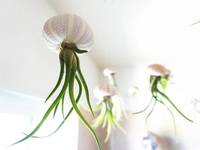6 houseplants that don't need soil that are perfect for an uncluttered, more-minimalist home
If you're a fan of minimalism, these pared-back plants share your philosophy by doing more with less
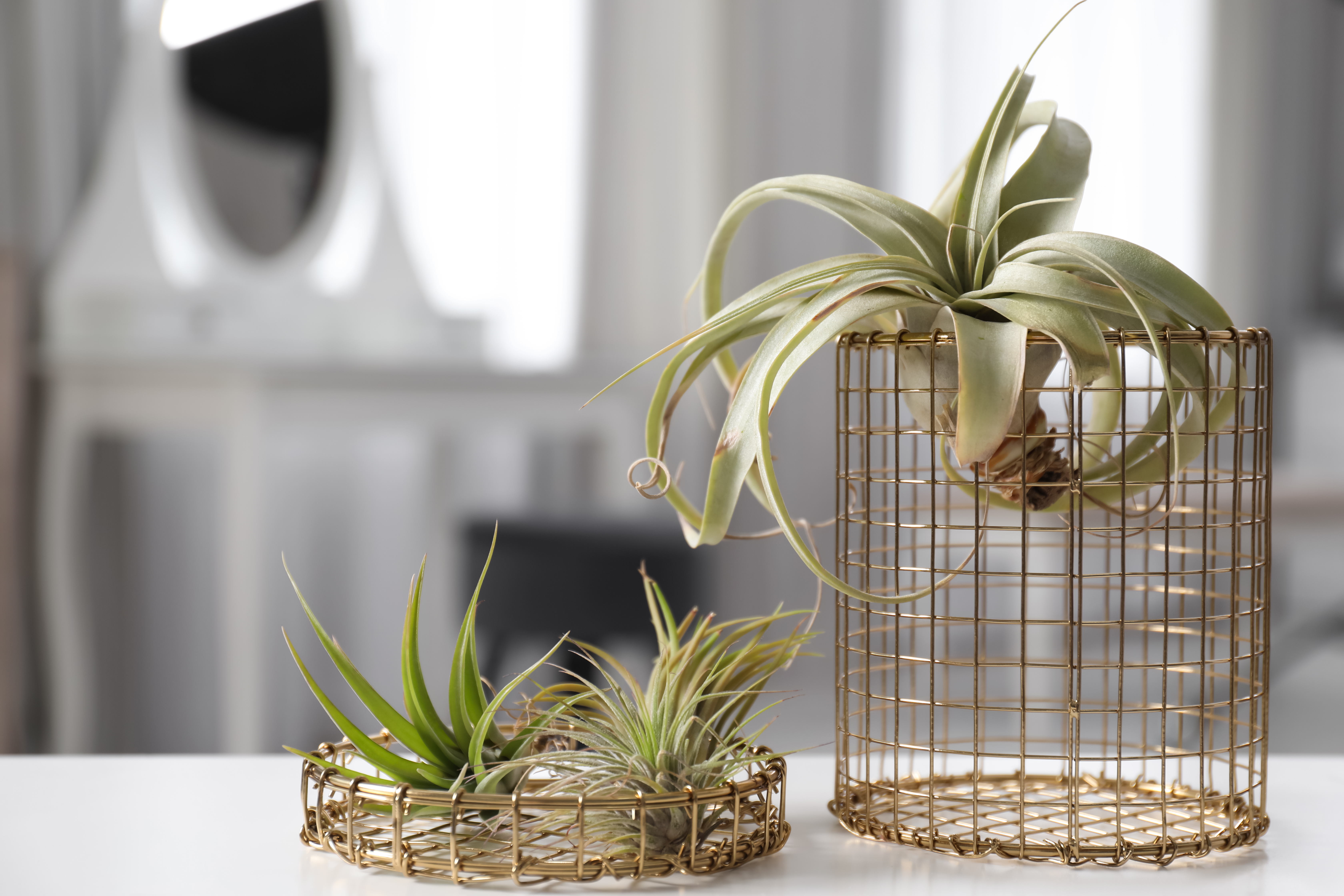

We all appreciate the joy that houseplants bring to a space, but, historically, they've lent themselves best to more maximalist schemes. If you're a stickler for minimalism, you might be looking for a more pared-back approach when it comes to incorporating foliage into your interiors. Our suggestion? A variety that survives without soil.
There are a whole host of benefits that arise from decorating with plants, from injecting color into neutral schemes and introducing nature into your home, to purifying the air and even improving productivity. From a solely aesthetic point of view, however, you also want to make sure your plants complement your style. If you're a fan of a more minimalist look, the last thing you want is a huge houseplant in a bulky pot that doesn't suit your space.
Instead, find a plant that shares your philosophy and does more with less. Here, we list the six best houseplants that survive without soil and don't require a container for a more pared-back approach to plants, alongside some expert insights.

Lilith is an expert at following news and trends across the world of interior design. She regularly shares simple solutions to help brighten our homes and a personal favorite of hers is houseplants. For this piece, she spoke with plant experts to learn all about the houseplants that can survive without soil for a more minimalist approach to decorating.
6 houseplants that don't need soil
Believe it or not, some houseplants can survive without soil. In fact, many of these species are more low-maintenance than their more common cousins, making them easier to care for and harder to kill. Here are our top picks for a minimalist approach to plants.
1. Tillandsia (air plants)
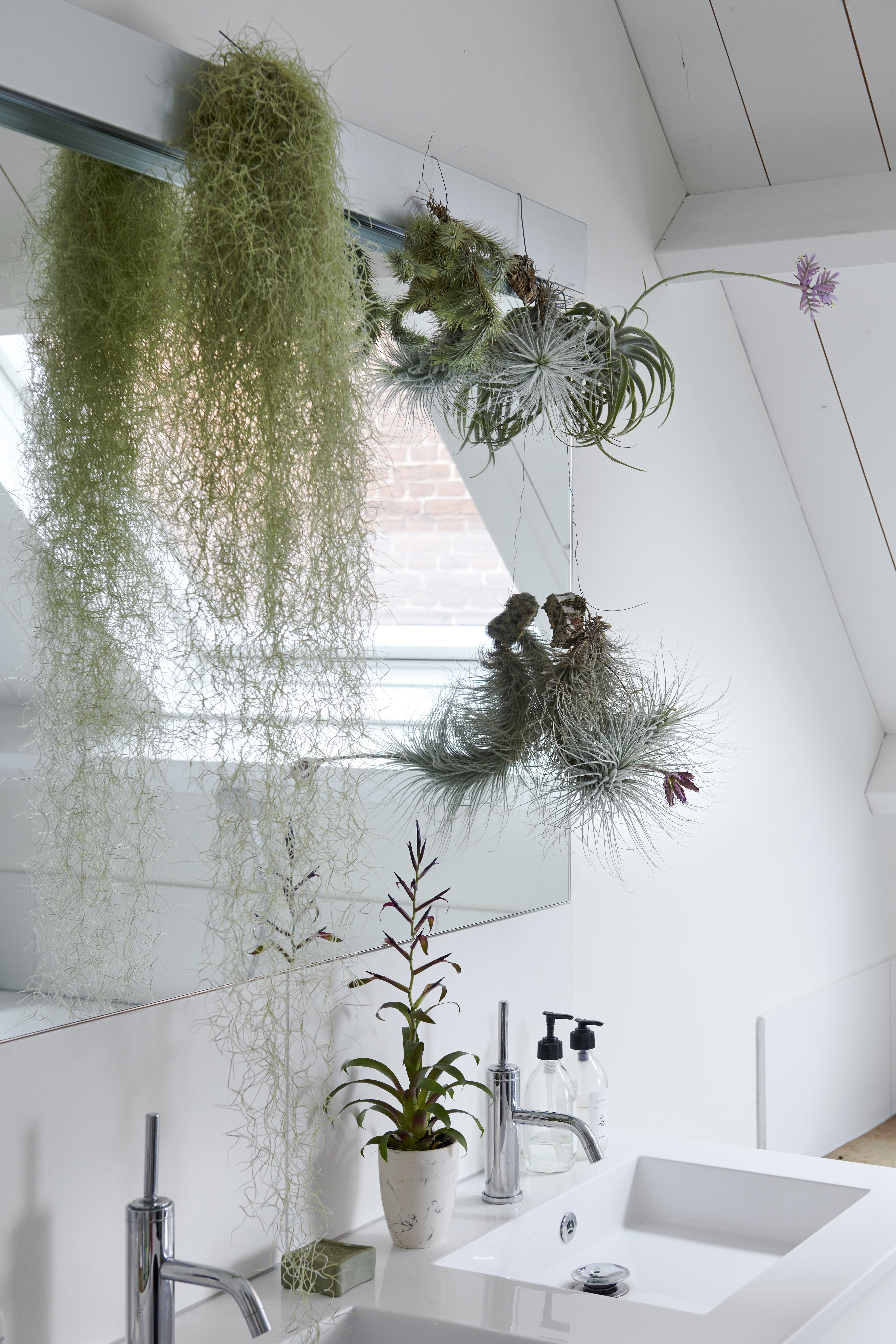
Tillandsia is more commonly known as the air plant and, as the name suggests, they survive solely from nutrients in the air - no water or soil necessary. That means if you're not especially green-thumbed, then these spikey-fronded friends are the one for you.
'Air plants are epiphytes, which are plants that grow on top of other plants (typically trees) co-existing in the most harmonious, harmless way,' explains Paris Lalicata, plant expert at The Sill. According to Mo Bhula, plant expert at The Botanical Archive, they can be found growing in a variety of habitats including deserts, rainforests, and even on telephone wires in urban areas, anchoring themselves to plants or structures where they then grow.
When it comes to incorporating them into your minimalist designs, what makes them so brilliant is they don't need any type of container at all. 'They can be mounted on a piece of driftwood, hung on a wire or glass terrarium, or simply placed in a decorative dish or bowl,' Mo explains. 'Spanish Moss is another species of Tillandsia that can form a long curtain of thin strands that make an interesting feature in the more humid parts of your homes. We’ve even seen them used instead of shower curtains in some homes!'
While they don't need watering in your regular sense, they will benefit from the occasional mist or soak every week or two, depending on the humidity levels in your home. 'It's important to avoid letting water collect in the center of the plant, however, as this can lead to rot,' adds Mo. If you're prone to forgetting water schedules try putting them in a steamy space (they're one of the best plants for bathrooms).
These air plants have been made into a cute octopus inspired idea with a sea urchin shell, perfect for your beach-themed bathroom. These super low-maintenance plants will love the steamy conditions in this space, too.
2. Staghorn ferns
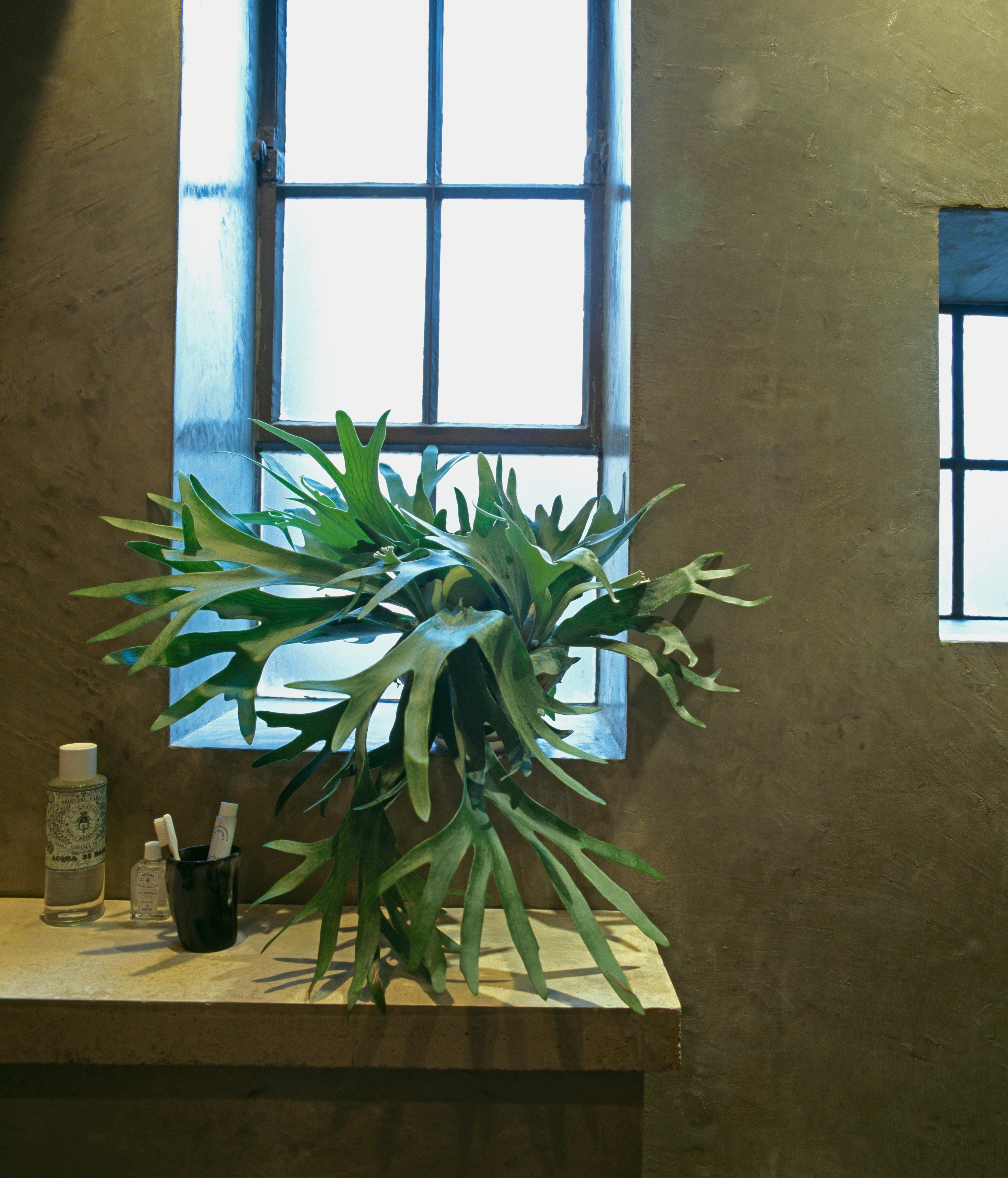
Another epiphytic plant is the staghorn fern. Also a type of air plant, this leafy foliage with its unique horn-shaped fronds will cling to other plants to grow. Caring for them is equally easy. 'They require bright, indirect light and should be misted or soaked in water regularly to keep them moist,' says Mo. 'They can also benefit from occasional fertilization with a balanced fertilizer.'
As a houseplant, they can be mounted on a piece of driftwood or other structure.
'Staghorn ferns are a popular choice for indoor gardening enthusiasts due to their unique and striking appearance,' Mo adds. 'They can be used to add a touch of natural beauty to any space, and are often incorporated into decorative displays or hung on walls as living art pieces. They are a great cruelty-free alternative to mounted stag skulls that can complement more modern rustic-themed interiors.'
3. Bromeliads
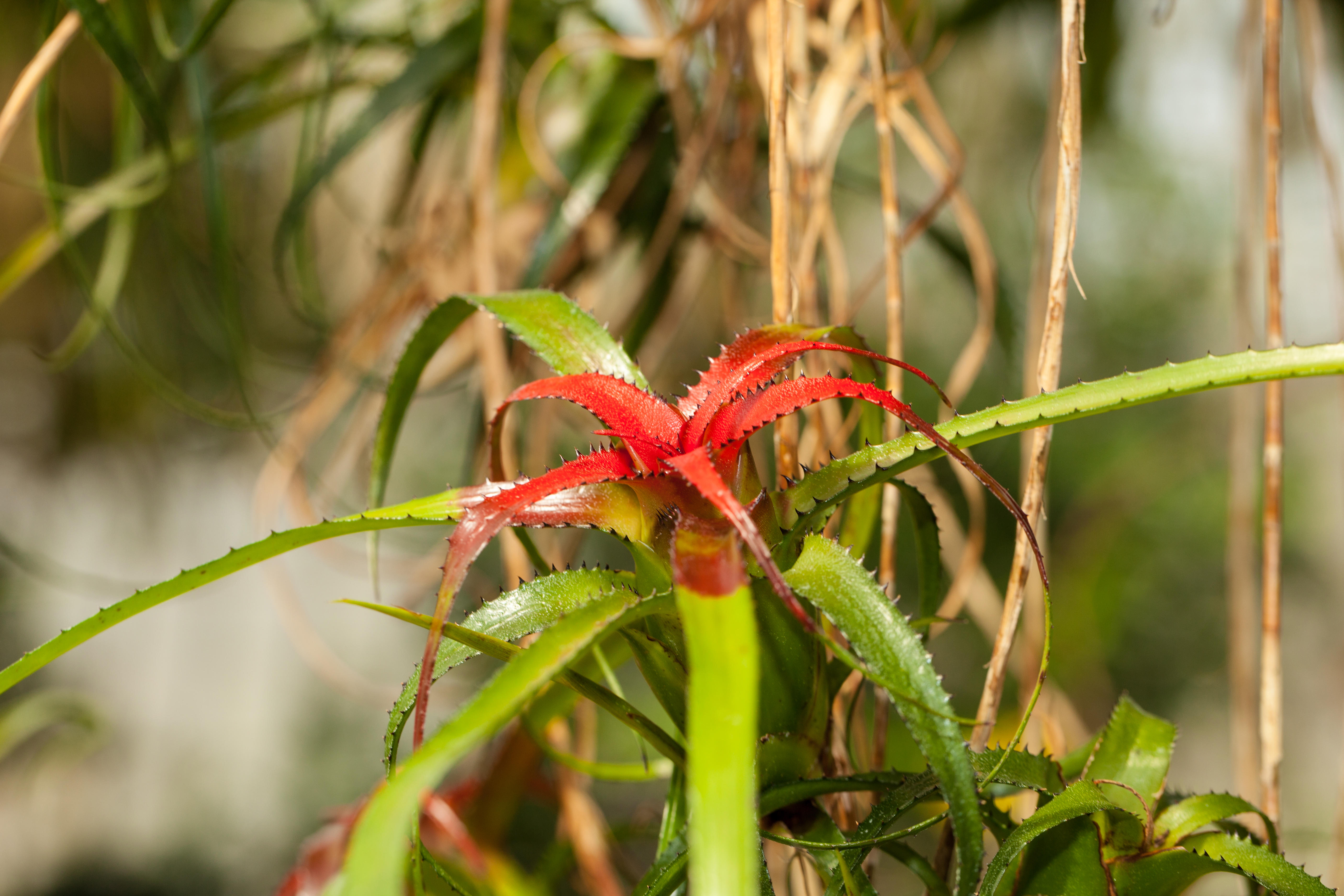
Bromeliads are a plant native to tropical and subtropical America. They have short stems with rosettes of stiff spiny leaves that can be red, pink, or orange in color. While some varieties require soil, there are also epiphytic varieties that will survive without.
Mo suggests mounting them on a piece of wood or placing them in a glass jar where they can be held in place by pebbles. 'Or they can be mounted on a piece of cork bark with sphagnum moss instead of planting directly into soil as this is how they would naturally grow in the wild,' says Paris. 'Bromeliads are also known as monocarpic species which means they flower once in their lifetime and die. However, before they die they usually save energy to create offsets (mini replicas of themselves) from the base of the plant/soil. These can be used to propagate and remount.'
Caring for epiphytic bromeliads will be similar to the other air plants in this list. Give them plenty of bright, indirect light, and, when it comes to how often to water your houseplant, be sure to mist or soak them at least once a fortnight to keep them at their best.
4. Vanda Orchids
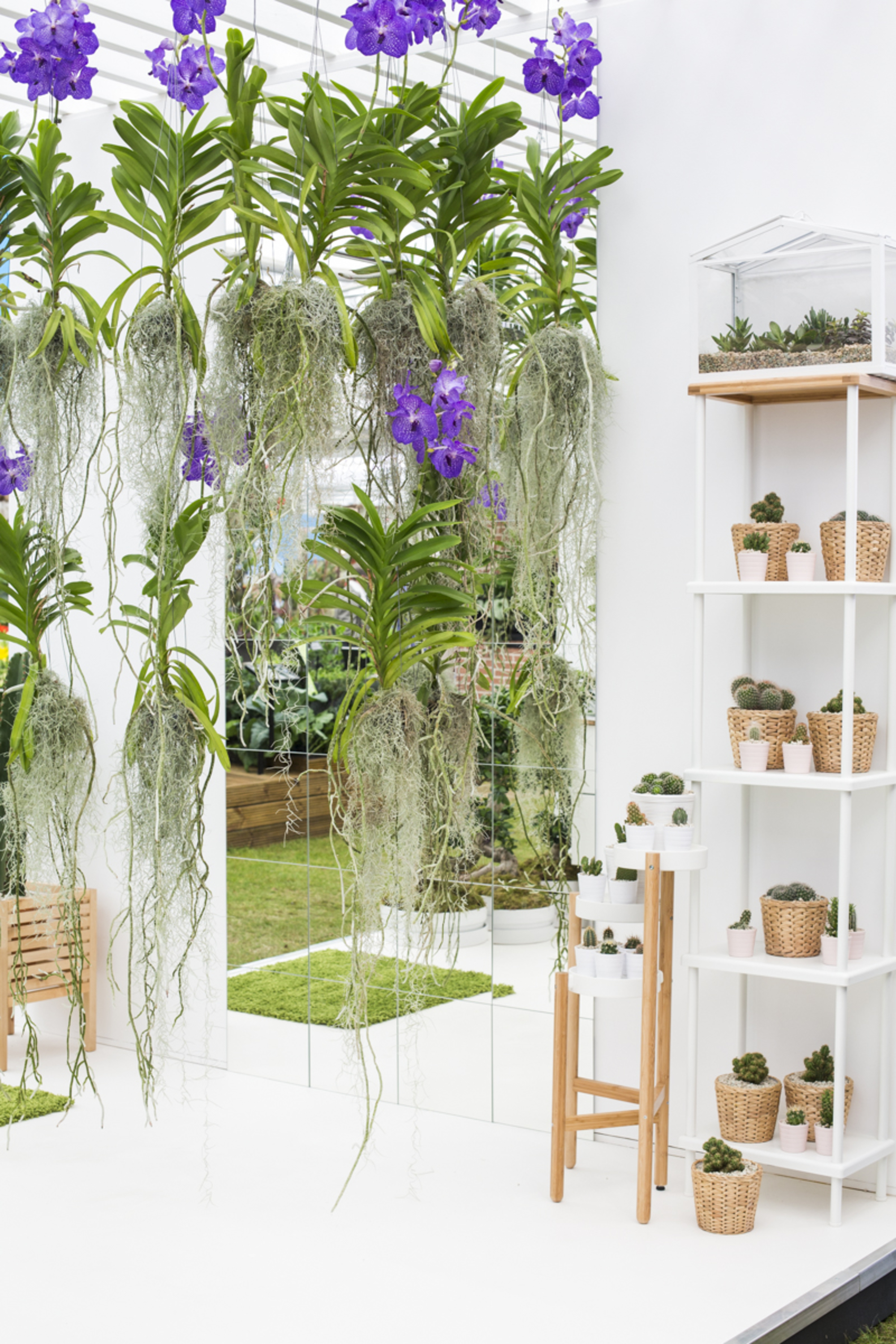
One of the best trailing houseplants, the vanda orchid is one of the most beloved ornamental plants. They produce stunning clusters of blooms in a host of colors, with long cascading aerial roots which can make a real statement in an otherwise minimalist space.
'Vanda orchids are a group of orchids that grow on trees high in the canopy, but indoors they tend to grow with their roots hanging freely from a hanger,' Mo explains. 'The flowers are incredibly showy and make a real statement and their roots can grow quite long. All you need to do is spray the roots once a week to allow them to absorb water and let them do their thing.'
While these orchids can grow in most parts of your home, bright indirect light is preferable. 'You can feel free to mount orchids to cork bark using sphagnum moss and fishing line,' says Paris. 'To best care for a mounted orchid, you’ll just want to take it to a sink every 7-10 days to soak the roots/sphagnum moss and let it drip dry before placing it back on display. They’ll also enjoy higher humidity if possible.'
While regular orchids are traditionally sold with their bloom stalks mounted up, they don’t naturally grow like this in the wild either, and their bloom stalks actually hang off of trees. As Paris notes: 'You can design your orchid and mimic this by removing the stake and clips from the bloom stalk and let your orchid blooms hang over a shelf or while it’s mounted on bark on a wall.'
5. Lucky Bamboo
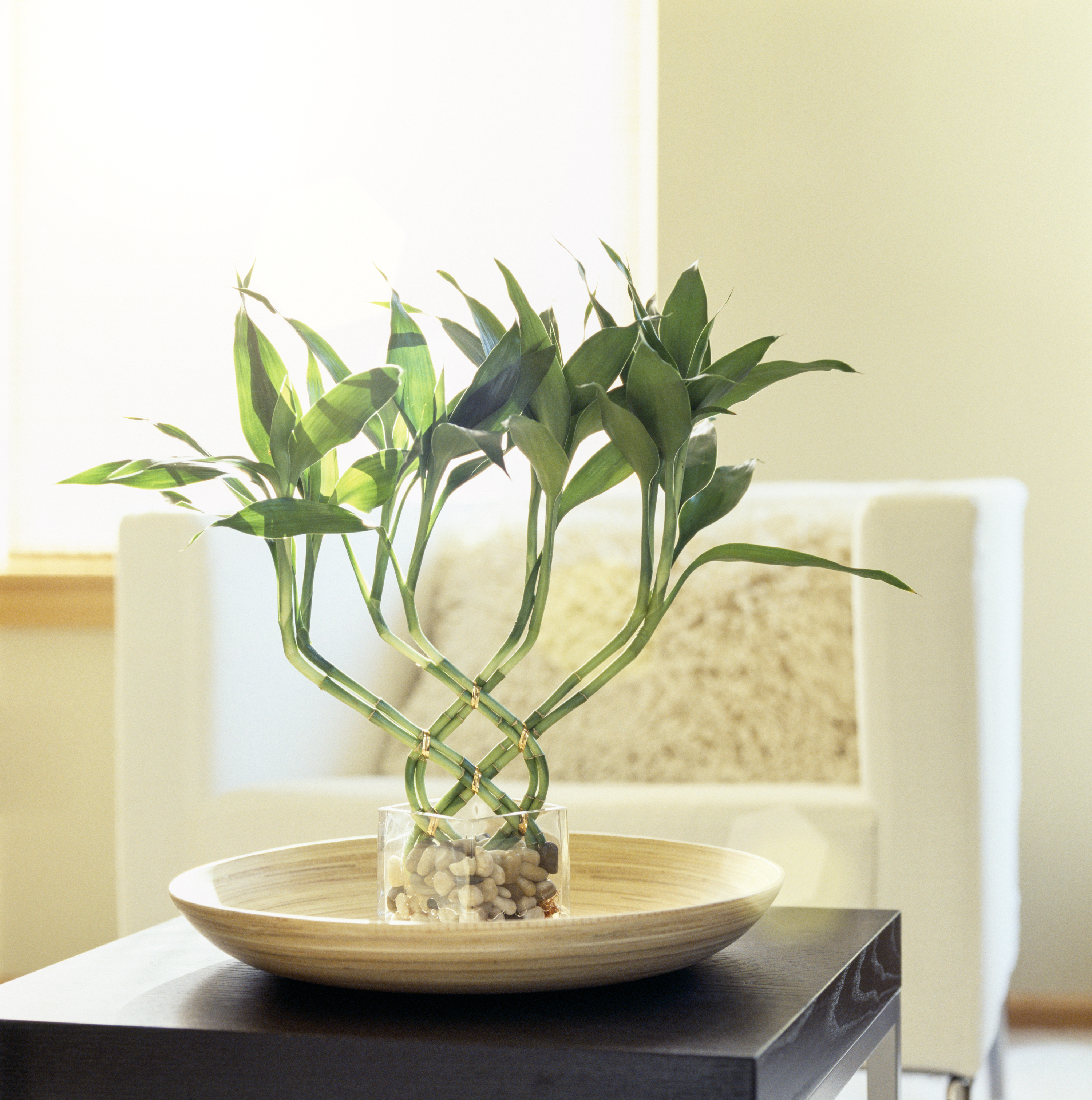
'Lucky bamboo is native to tropical rainforests in Southeast Asia and is characterized by its long, slender stems and small, glossy green leaves,' Mo explains. 'Interestingly this plant is not related to the bamboo plant and is more closely related to the asparagus found in the kitchen.'
One of the best Feng Shui plants for a home office, this decorative houseplant is one of the best houseplants for minimalists because it has luscious green stems that can be braided or trained into spiral shapes with tufts of long, thin leaves at the top. They're typically grown in water rather than soil, but can't survive in the air like epiphytes. 'You can arrange it in any type of vessel that is deep enough to submerge the roots, adding rocks/pebbles of any color/shape to the vase helps to anchor down the plant,' Paris explains.
They'll thrive best in bright indirect sunlight, and Paris recommends changing the water every 4-5 weeks (more often if you notice algae buildup). 'Using bottled water, distilled water, or rainwater would be best since bamboo is sensitive to hard minerals in chlorine that can be found in tap water,' she explains. 'At the times you do a complete water change it would be best to add in a bamboo-specific fertilizer to the water, only about 5-6 times a year.'
Lucky bamboo plant, Eastern Leaf
This lucky bamboo arrangement from Eastern Leaf is a beautiful addition to your minimalist space. The height of the vase makes it the perfect centerpiece thanks to the fullness of the two spiral sticks.
6. Philodendron cordatum
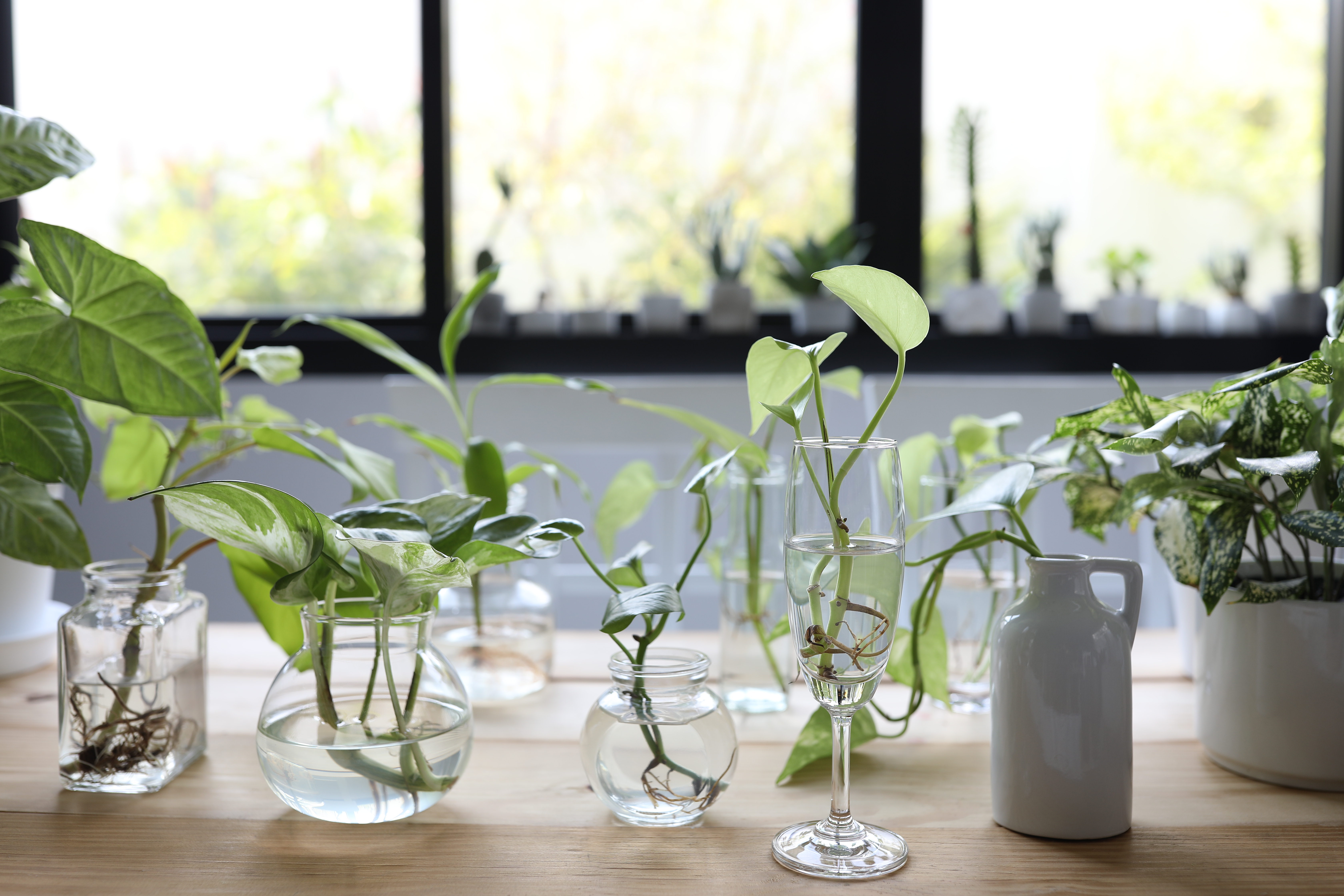
Last on the list is the philodendron cordatum, a vining plant native to South America with leafy foliage that likes to climb. 'The Philodendrons are in the Aroid family who have ancestors that have adapted to more wet, swampy conditions,' notes Paris. 'Therefore, this plant can be propagated in a glass vessel of water and left to live that way indefinitely.'
While the plant grows much slower if grown in water, when arranged in glass jars with its roots exposed it can be an excellent addition to a more minimalist space. 'To care for a philodendron in water, provide med-bright indirect light,' says Paris. 'When the water level gets low you can top it off with fresh water, but if algae starts to develop you’ll want to wash out the vessel.'
After the first year of the plant rooting in water, Paris suggests adding fertilizer to the vessel during spring and summer to give it some extra nutrients during the growing season. 'The best way to fertilize is to dilute the fertilizer in the can that you’d be using for your other plants and just top off the vessel with your philodendron in with that same water,' she adds. It's worth noting that its life will be shorter than it would in soil, however.
Be The First To Know
The Livingetc newsletters are your inside source for what’s shaping interiors now - and what’s next. Discover trend forecasts, smart style ideas, and curated shopping inspiration that brings design to life. Subscribe today and stay ahead of the curve.

Lilith Hudson is a freelance writer and regular contributor to Livingetc. She holds an MA in Magazine Journalism from City, University of London, and has written for various titles including Homes & Gardens, House Beautiful, Advnture, the Saturday Times Magazine, Evening Standard, DJ Mag, Metro, and The Simple Things Magazine.
Prior to going freelance, Lilith was the News and Trends Editor at Livingetc. It was a role that helped her develop a keen eye for spotting all the latest micro-trends, interior hacks, and viral decor must-haves you need in your home. With a constant ear to the ground on the design scene, she's ahead of the curve when it comes to the latest color that's sweeping interiors or the hot new style to decorate our homes.
-
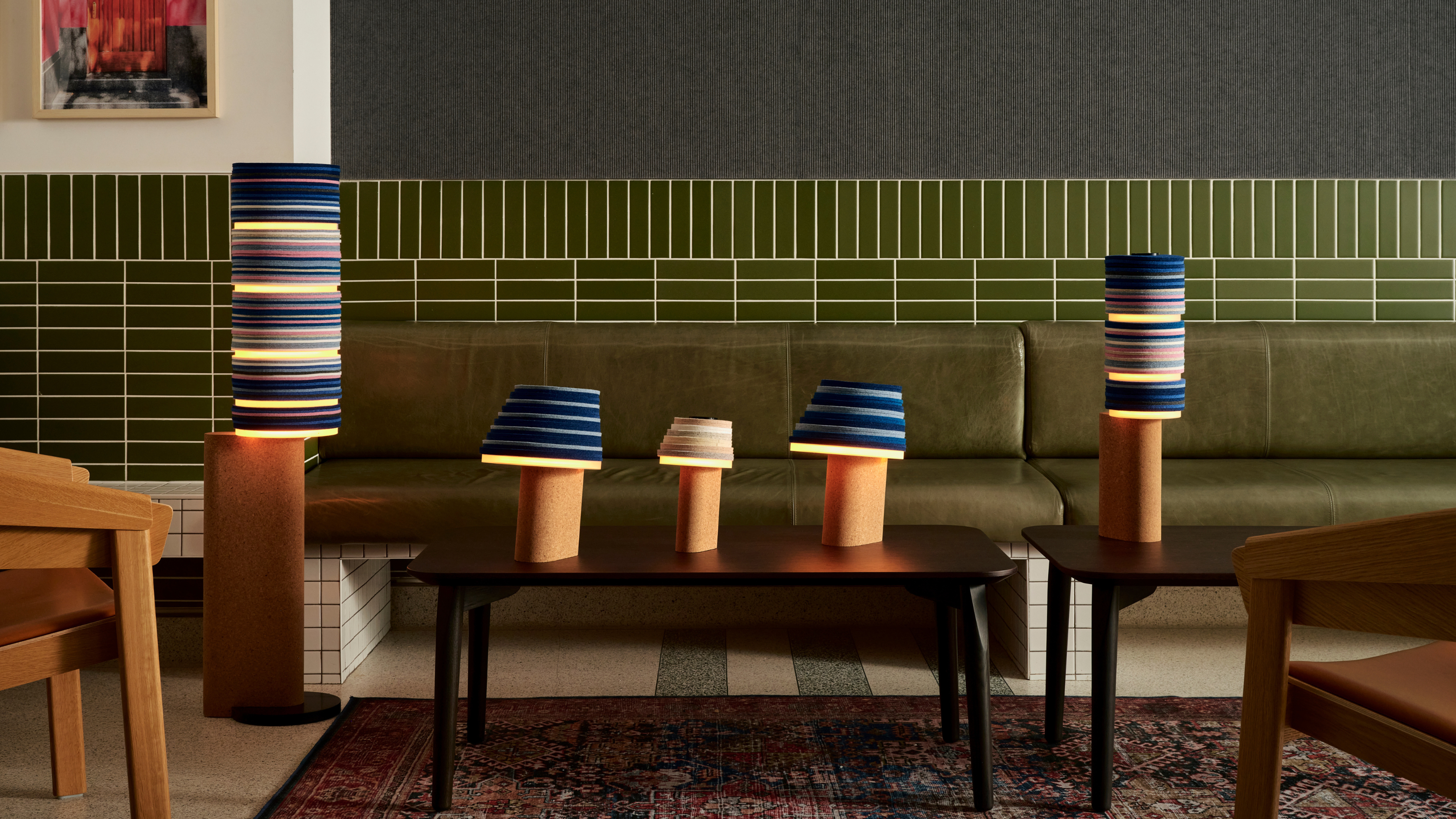 7 Sustainable Product Designs That Are Setting the Agenda for Environmentally-Conscious Homes in 2025
7 Sustainable Product Designs That Are Setting the Agenda for Environmentally-Conscious Homes in 2025From pillows made from textile waste to sanitaryware made in the world's first electric kiln, these brands are revolutionizing sustainable design — for the better
By Devin Toolen
-
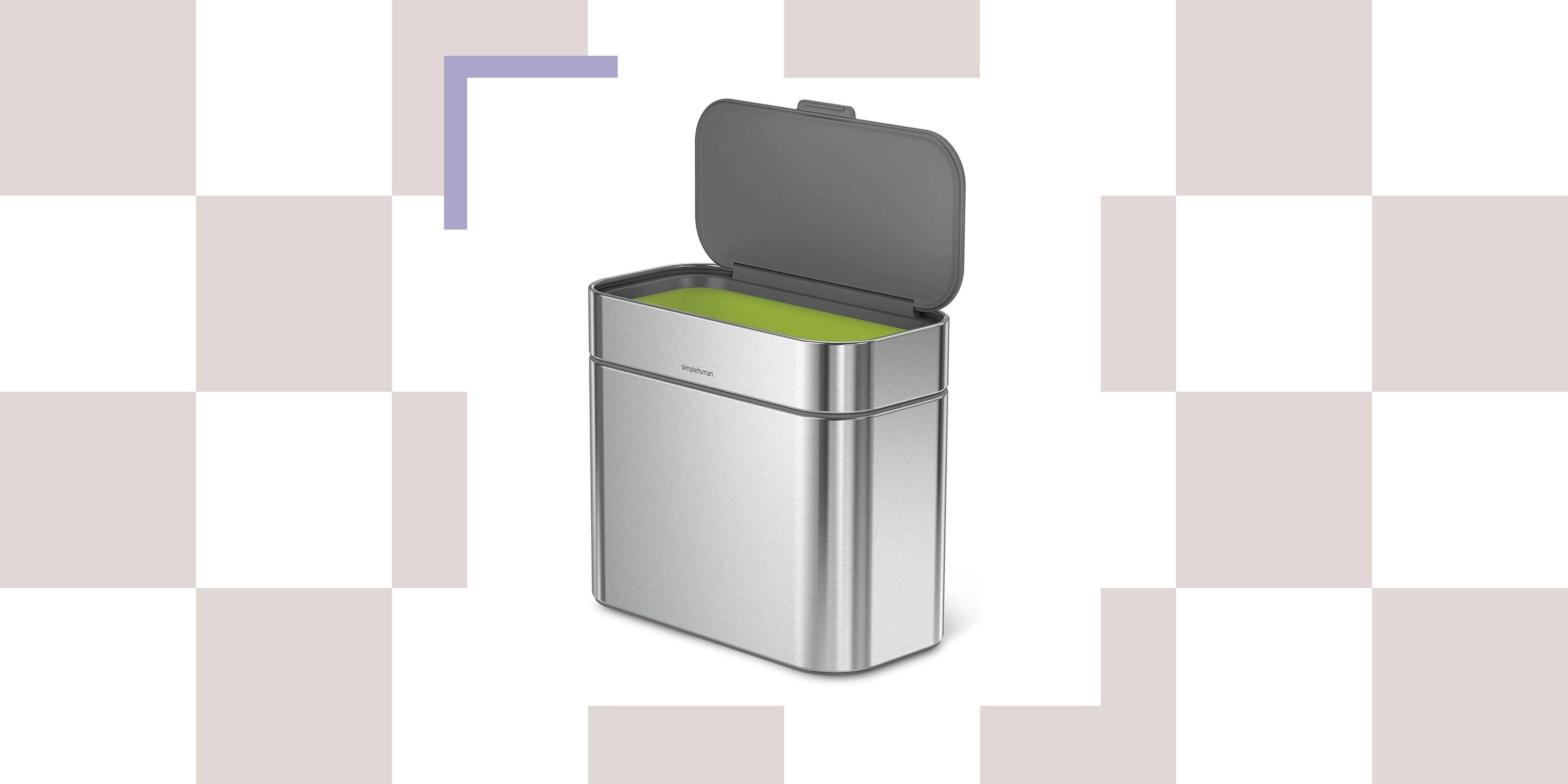 NYC's New Rules Forced Me to Find a Chic Compost Bin — Here's 7 Options Significantly Cheaper Than the $300 Fine
NYC's New Rules Forced Me to Find a Chic Compost Bin — Here's 7 Options Significantly Cheaper Than the $300 FineComposting is now mandatory in NYC. Here’s how to do it stylishly
By Julia Demer
